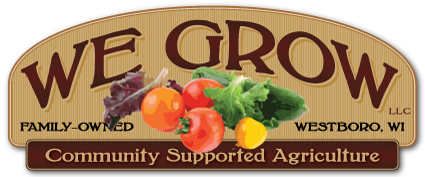
First planting of beans was so heavily browsed by deer that we tilled down 2/3 of the row feet and started over. The plants were stunted and could not outcompete the weeds at that point.

This is the second planting of beans. It is doing much better. There are approx 1,000 row feet of this planting and we have been spraying with homemade deterrent to keep the deer off of these beans.Small amount of browsing still takes place.

Brussel sprouts tops are the new favorite in early August. Interesting how the deer’s tastes change.

Tomatoes. The deer largely leave the tomatoes and plants alone. They do occasionally decide to try to eat them and here is the evidence on one such incidence.

Sweet potato vines missing leaves late in the season. About 10% of the slips originally planted were eaten off and did not grow back.

Sweet potato vines missing leaves late in the season. About 10% of the slips originally planted were eaten off and did not grow back.

Onion sampling as well. This will not set this plant back in our opinion, but it does make selling an onion with it’s green edible top a challenge.

For the most part, they love broccoli leaves which sets the plant back and makes regular harvest patterns unpredictable. Occasionally they will eat the heads too.

For the most part, they love broccoli leaves which sets the plant back and makes regular harvest patterns unpredictable. Occasionally they will eat the heads too.

Peas have definitely taken the greatest hit. We barely harvested 15 lbs from this 250′ row. They were eaten down several times. We did not remove the vines late in the season in hopes the deer would eat the peas instead of other crops.

Peas have definitely taken the greatest hit. We barely harvested 15 lbs from this 250′ row. They were eaten down several times. We did not remove the vines late in the season in hopes the deer would eat the peas instead of other crops.

Peas have definitely taken the greatest hit. We barely harvested 15 lbs from this 250′ row. They were eaten down several times. We did not remove the vines late in the season in hopes the deer would eat the peas instead of other crops.

Beets have been eaten down to nubs. Some died, some grew back. Here is some more recent browsing after regrowth. The roots are not as large as they should be without browsing pressure.

One of the biggest disappointment is by far the complete loss of the field cucumbers. These are the trial cukes we were growing for UW Madison Horticulture Dept research team. Total loss. Most of the row was eaten to stubs and died. Only about 10% of the plants grew after initial mow down.

One of the biggest disappointment is by far the complete loss of the field cucumbers. These are the trial cukes we were growing for UW Madison Horticulture Dept research team. Total loss. Most of the row was eaten to stubs and died. Only about 10% of the plants grew after initial mow down.

New fence provided by APHIS in hopes of preventing further damage this fall. Installed 8-18-17 thru 8-22-17.

New fence provided by APHIS in hopes of preventing further damage this fall. Installed 8-18-17 thru 8-22-17.

New fence provided by APHIS in hopes of preventing further damage this fall. Installed 8-18-17 thru 8-22-17.
image











